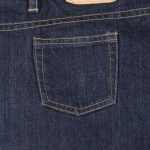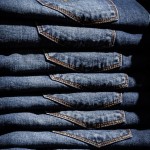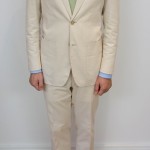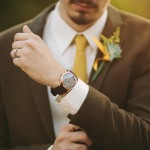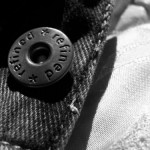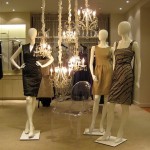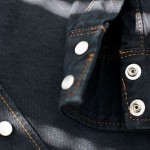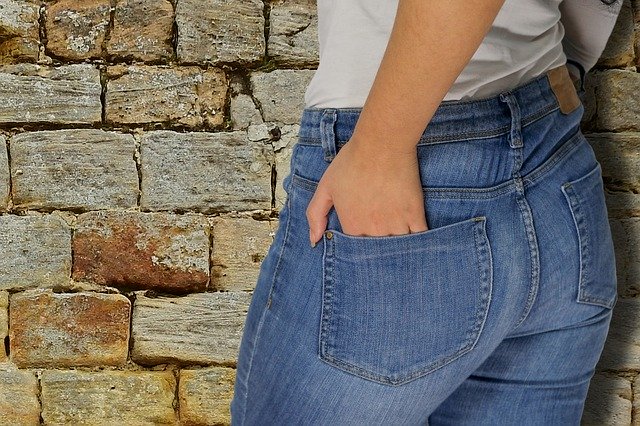
by MakeYourOwnJeans | jeans |
Every wonder why jeans feature yellow-colored stitching? Although there are exceptions, most types of jeans — including men’s and women’s styles — are made with yellow stitching. Whether they are boot cut, straight leg, skinny, low rise, high rise, etc., they probably have subtle hints of yellow in the form of stitching. It’s a common characteristic of denim jeans that’s been around for nearly a century. So, why do manufacturers use yellow stitching in jeans rather than other colors? Strength and Durability Some of the world’s first jeans were designed with yellow stitching because of its superior level of strength and durability. During the late 1800s, Levi Strauss began exploring common materials with which to make jeans. While Strauss was adamant on using denim as the base material, he sought a stronger material for the stitching. At the same, Strauss had two main options from which to choose: silk and linen. Of those two materials, linen — which features a natural yellow tone — was the strongest and more durable, making it Strauss’s preferred choice for the stitching in his jeans. With its strong and durable properties, yellow-colored linen was a better choice than silk for the stitching in jeans. Strauss discovered acknowledged this fact, which prompted him to use yellow-colored linen in his jeans. Low Cost In addition to being strong and durable, yellow-colored linen stitching is also inexpensive. Even if you’re unfamiliar with the construction of jeans, you’re probably well aware that silk, when compared to other materials, is expensive. Silk is made by cultivating silkworms in a controlled environment, typically with mulberry trees. As the silkworms...
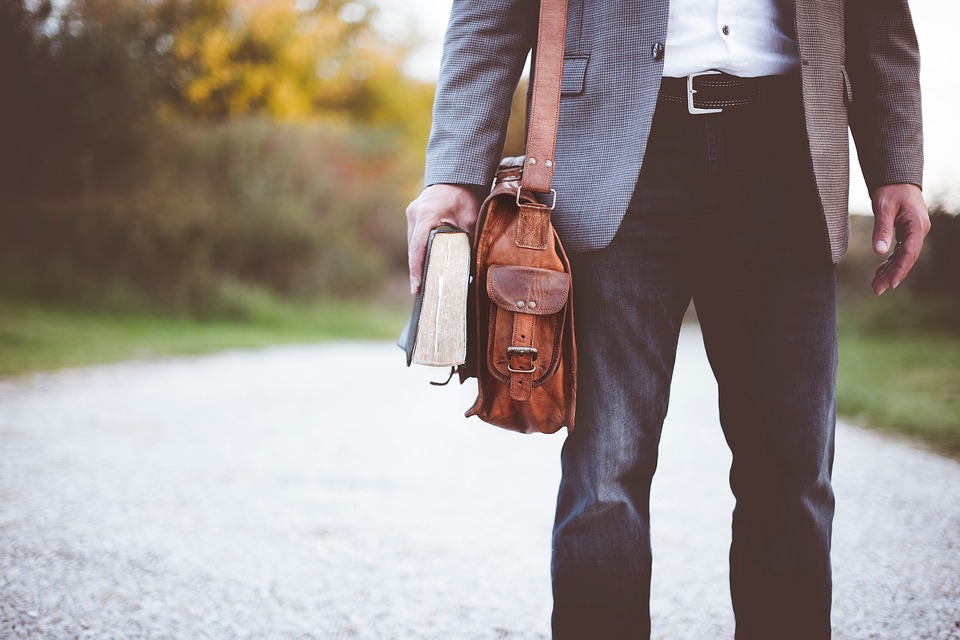
by MakeYourOwnJeans | jeans |
Have you heard of smart casual attire? Not to be confused simply with casual attire, it’s become increasingly popular in the United States as well many other countries. If you’re thinking about wearing smart casual outfits, though, you’ll be pleased to hear that you can wear jeans with them. Assuming you choose the right type of jeans, they’ll help you create a complete and cohesive smart casual outfit. So, how exactly do you dress smart casual with jeans? What Is Smart Casual? Before we reveal how to dress smart casual with jeans, let’s first take a closer look at this relatively new and modern dress code. Originating in the 20th century, smart casual is a type of Western dress code that’s characterized by the use of casual and formal elements. Most outfits, of course, either fall under the category of casual or formal attire. Smart casual, however, blends these two types of attire together to create a unique style. With smart casual, you’ll wear a combination of casual and formal garments, resulting in an attractive, comfortable and versatile outfit. Many businesses now use smart casual as the dress code for their employees. They don’t require their employees to wear a suit and tie — or other types of strictly formal outfits — each day. Instead, these businesses allow employees to wear a combination of casual and formal garments. Known as smart casual, it offers a unique alternative to traditional formalwear. Choose Dark-Colored Jeans Whether you’re getting dressed for work or any other occasion, you should choose dark-colored jeans if you’re trying to create a smart casual outfit. Why are...
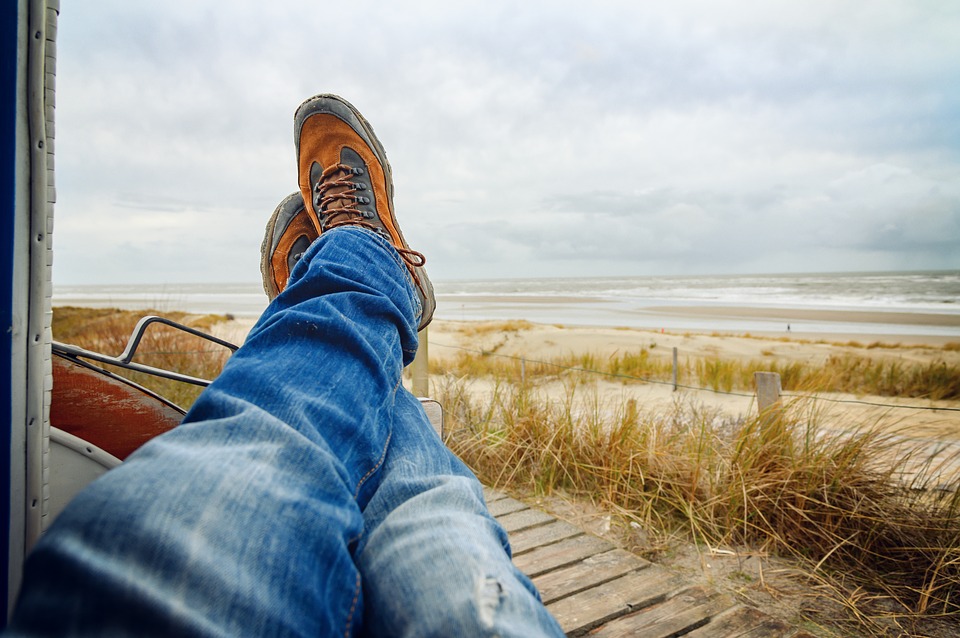
by MakeYourOwnJeans | jeans |
Have your favorite pair of jeans developed wrinkles? As with most garments, it’s not uncommon for jeans to develop wrinkles. Wearing a pair of jeans for an extended period, for example, can cause the denim fabric to crease, thereby leading to the formation of wrinkles. When this occurs, your jeans will look messy and unkempt. The good news is that you can de-wrinkle your jeans using one of the following methods. #1) Toss Them in the Dryer Running your jeans in the dryer for about 10 to 15 minutes should smooth out most if not all of the wrinkles. As they bounce around in the dryer, your jeans will smooth out. It’s a safe and effective way to de-wrinkle jeans that won’t damage or otherwise harm your jeans. Just remember to set your dryer to the low heat setting. If your jeans are exposed to too much heat, they may shrink and/or fade. #2) Hang Them on a Clothes Hanger Hanging your jeans on a clothes hanger can help to eliminate wrinkles. When you remove your jeans from the dryer, place them on a clothes hanger, after which you can hang them in your closet or elsewhere. By hanging your jeans on a clothes hanger, gravity will naturally smooth out any wrinkles in them. With that said, it’s recommended that you use a heavy-duty wooden clothes hanger — as opposed to a cheap plastic clothes hanger — for maximum benefit. Cheap clothes hangers tend to buckle under the weight of heavy garments, meaning it could break with your jeans on it. #3) Use an Iron Of course, you can...

by MakeYourOwnJeans | jeans |
Want to know how to pinroll your jeans? Whether you’re wearing skinny jeans, straight-leg, low-rise, high-rise or any other type of jeans, you can typically pinroll them at the bottom. It’s a relatively easy process that should only take a few minutes. And when finished, your newly pinrolled jeans will look cleaner and more stylish. Overview of Pinrolling The term “pinrolling” refers to a process in which you roll up the bottom of your jeans several inches to create a narrower fit that hugs your legs. While we explain the process step by step in the section below, pinrolling involves rolling up the bottom of each pant leg. Assuming your jeans are full length, you should be able to pinroll them. Pinrolling has been around for over a century. Even during the 1800s, it wasn’t uncommon for men to pinroll their pants. If a man had a pair of pants that were too long, he would pinroll them to create a more comfortable fit. Today, pinrolling is performed on both men’s and women’s pants, including jeans. Pinrolling simply involves folding up to the bottom of the pant legs to achieve a narrower and more tapered fit. Pinrolling vs Cuffing: What’s the Difference? The terms “pinrolling” and “cuffing” are often used interchangeably when referring to folding up the bottom of pants, but they aren’t necessarily the same. So, what’s the difference between pinrolling and cuffing? Pinrolling is used to create a more tapered fit in which the jeans become narrower towards the bottom, whereas cuffing maintains the original fit without tapering them. You can pinroll or cuff your jeans, but...
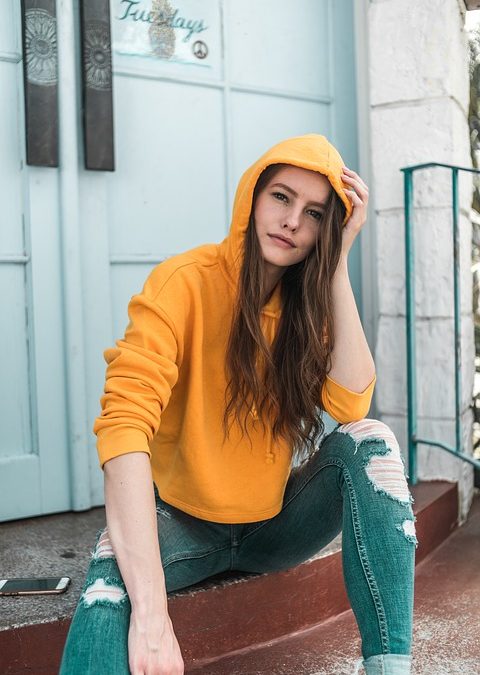
by MakeYourOwnJeans | jeans |
Worn by men and women alike, selvedge jeans offer an unparalleled level of quality. They are characterized by a distinct weaving process that creates a tight and narrow band of fabric at the bottom of the pant legs. To the unsuspecting eye, selvedge jeans may look the same as traditional non-selvedge jeans. However, their unique weaving pattern offers several benefits. To learn more about selvedge jeans and why they are so popular, keep reading. What Are Selvedge Jeans? Also known as self-edge jeans, selvedge jeans are manufactured using an antique-style loom to create a tight and narrow band of fabric at the bottom of the pant legs. If you look at the photo below, you’ll see a pair of selvedge jeans. The bottom of the jeans features a band of interior fabric — known as a selvedge strip — that’s visible from the outside. You can easily spot a pair of selvedge jeans by looking for the selvedge strip. Whether you’re shopping online or at a local store, look at the bottom of the pant legs. If you see a narrow band of fabric in a different color or tone than the rest of the denim, the jeans are considered selvedge. If there isn’t a narrow band of fabric at the bottom of the pant legs, on the other hand, the jeans aren’t selvedge. Some people assume that selvedge jeans are made of a special type of denim, but this isn’t necessarily true. They are still made of the same denim material — which is actually just cotton — as all other jeans. The only exception is stretch selvedge...
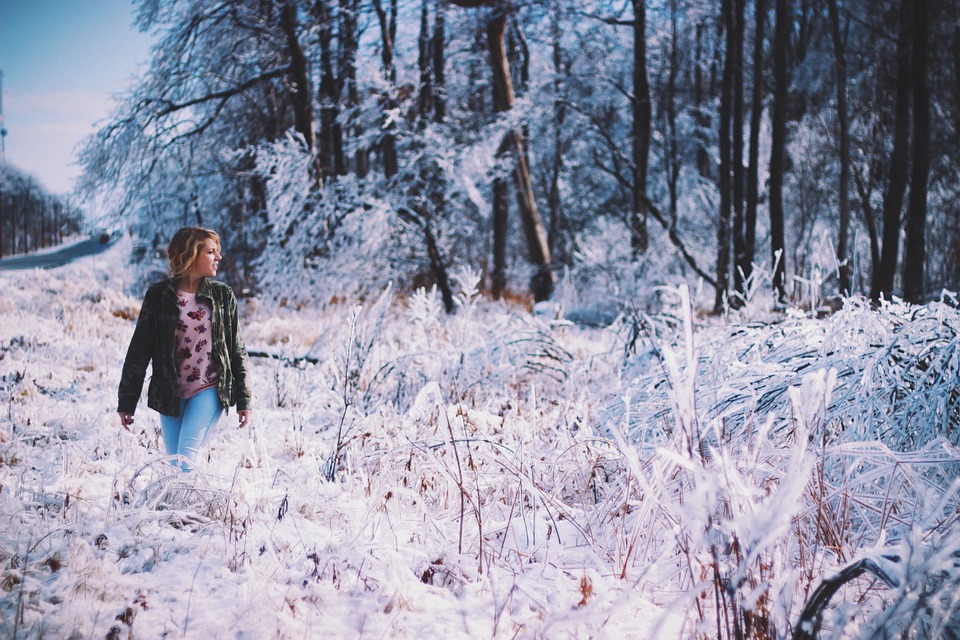
by MakeYourOwnJeans | jeans |
Dec. 21 marks the beginning of the winter season. Regardless of where you live, you can expect cooler temperatures, as well as fewer hours of sunlight, during this time of year. However, that shouldn’t stop you from including denim jeans in your outfits. Even throughout the otherwise cold winter months, you can still wear denim jeans. You just need to choose the right type of denim jeans. In this post, you’ll learn how to choose the perfect denim jeans for the winter season. Heavyweight Denim Denim jeans are often classified by the weight of their denim. Lightweight denim jeans, as the name suggests, are made of less denim than their heavyweight counterparts. A typical pair of lightweight denim jeans may have just 8 or 10 ounces of denim, whereas a pair of heavyweight denim jeans may have 12 or 14 ounces of denim. Because they contain more denim — nearly twice as much denim in some cases — heavyweight denim jeans are better suited for the winter season than lightweight denim jeans. You can wear either type during the winter, but you’ll experience a higher level of warmth and comfort by sticking with heavyweight denim jeans. Dark Color In addition to a heavyweight construction, jeans featuring a dark color can also protect you from the cold winter weather. A pair of black- or indigo-colored jeans, for example, will likely offer greater warmth than a pair of white- or light blue-colored jeans. How does the color of jeans affect the amount of warmth they offer exactly? All garments will absorb light energy, those some absorb more light energy than others....








